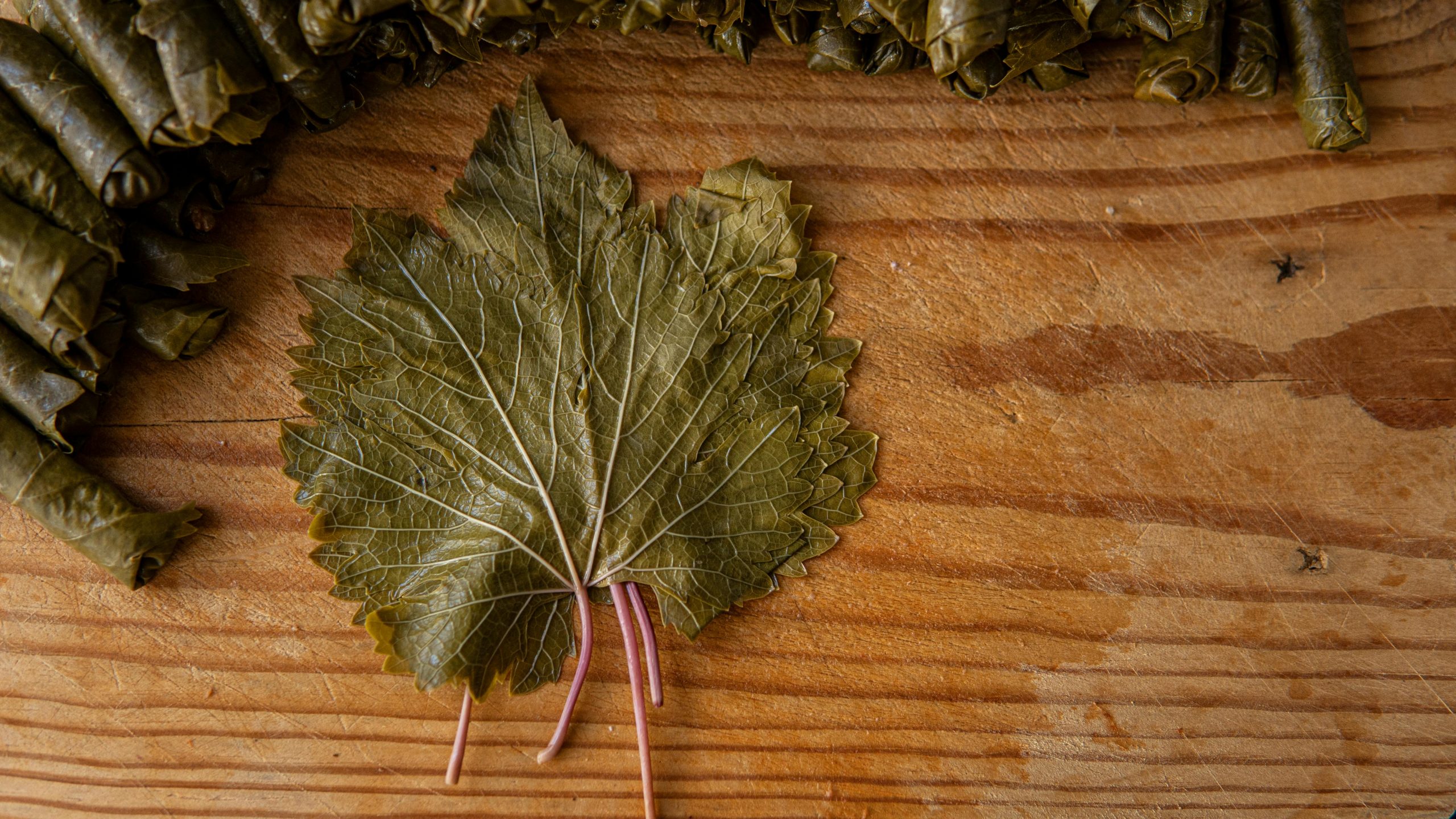
When we talk about grapevines, the conversation often revolves around the fruit. Grapes steal the spotlight, but the unsung hero of the vine is its leaves. These often-overlooked treasures are more than just a backdrop for your Instagram-worthy vineyard photos. Packed with nutrients, steeped in history, and brimming with culinary and health potential, wine leaves deserve their own moment in the spotlight.
A Brief History of Grape Leaves
They have been used for centuries, particularly in Mediterranean, Middle Eastern, and Eastern European cultures. From the iconic Greek dolmas (stuffed grape leaves) to medicinal teas in ancient Persia, these grape leaves have played versatile roles. Their culinary use dates back to ancient Greece and Rome, while their medicinal properties were cherished by traditional healers in the Middle East.
Today, their legacy continues. They’re not only a cultural delicacy but also a sought-after ingredient for health-conscious foodies and natural wellness enthusiasts.
Nutritional Powerhouse
Grapevine leaves are a hidden gem when it comes to nutrition. They’re low in calories, high in fiber, and packed with essential vitamins and minerals. Here’s what makes them stand out:
- Rich in Antioxidants
Grape leaves contain flavonoids, which help combat oxidative stress in the body. These compounds can reduce inflammation, improve heart health, and even lower the risk of chronic diseases. - High in Vitamins
Loaded with Vitamin A, Vitamin C, and Vitamin K, wine leaves support vision, boost immunity, and help with blood clotting and bone health. - Packed with Minerals
Potassium, calcium, magnesium, and iron are all present in wine leaves. These minerals support everything from healthy bones to a strong cardiovascular system.
Culinary Wonders
Wine leaves shine brightest in the kitchen. Their tangy, slightly bitter flavor adds depth to dishes while their texture provides the perfect wrapping for a variety of fillings.
Popular Dishes
- Dolmas: Perhaps the most famous use, grape leaves are stuffed with rice, herbs, and sometimes meat. They’re rolled into small parcels and served as appetizers.
- Pickled Wine Leaves: Preserved in brine, they are a pantry staple in many cultures. They’re used in everything from soups to salads.
- Wrap Alternatives: Wine leaves are gaining popularity as a gluten-free, low-carb alternative to tortillas or sandwich wraps.
Wine Pairing with Greek Dolmas and a Basic Recipe
Greek dolmas, those tangy, herb-filled grape leaf wraps, are a culinary delight that pairs beautifully with wine. The refreshing acidity of white wines complements the citrusy flavor of dolmas, making varieties like Assyrtiko or Sauvignon Blanc ideal choices. For a more adventurous pairing, a light-bodied red like Pinot Noir or a chilled Rosé can enhance the dish’s herbal and savory notes.
To make your own dolmas, start by preparing a filling with cooked rice, fresh dill, mint, parsley, and a squeeze of lemon juice. Spoon the mixture onto blanched wine leaves, roll them into small parcels, and simmer them gently in a broth of olive oil, water, and lemon. Serve them warm or cold, alongside your favorite wine, for a taste of the Mediterranean in every bite.

Health Benefits of Wine Leaves
The health benefits of grape leaves extend far beyond their nutritional value. Traditional medicine and modern science both highlight their potential to support well-being.
- Digestive Aid
The fiber in them helps regulate digestion. It can prevent constipation and promote a healthy gut microbiome. Some traditional herbalists even recommend wine leaf tea to soothe upset stomachs. - Anti-Inflammatory Properties
Thanks to their flavonoid content, wine leaves can help reduce inflammation. This makes them particularly useful for conditions like arthritis or general joint pain. - Supports Blood Circulation
Compounds in them may help improve blood flow. Some studies suggest they can reduce symptoms of venous insufficiency, such as swollen legs or varicose veins. - Antimicrobial Benefits
Wine leaves have natural antimicrobial properties. This means they can help fight off harmful bacteria or fungi, making them a potential ally in maintaining oral and gut health. - Skin Health
Rich in Vitamin C and antioxidants, they can promote healthier skin. They combat free radicals that cause premature aging and support collagen production.
Beyond the Plate: Creative Uses for Wine Leaves
Wine leaves aren’t just for eating. Their versatility extends to wellness and even creative projects.
Herbal Teas and Tinctures
Wine leaves can be dried and steeped into teas. These teas are believed to improve digestion and boost immunity. You can also infuse the leaves into oils or alcohol to create tinctures for topical or oral use.
Natural Dye
Wine leaves contain tannins, which can be used to create natural dyes. Depending on the type of grapevine, you can achieve beautiful shades of green, brown, or even subtle purples.
Composting and Mulch
If you’re not into eating them, wine leaves are an excellent addition to your compost pile. They enrich the soil with nutrients, creating a sustainable cycle for your garden.
How to Source Wine Leaves
If you’re lucky enough to live near a vineyard, you might be able to source fresh wine leaves directly. Farmers markets and specialty stores often sell brined or pickled grape leaves. For home gardeners, grapevines are surprisingly easy to grow. They thrive in sunny climates and provide a constant supply of fresh leaves throughout the growing season.

Tips for Using Wine Leaves Safely
- Avoid Sprayed Leaves
If you’re harvesting leaves from a vineyard, ensure they don’t have pesticides or chemicals. - Use Young Leaves
Older leaves can be tough and bitter. Opt for younger, tender leaves for the best flavor and texture. - Store Properly
Fresh leaves can be stored in the fridge for up to a week. For longer storage, blanch and freeze them or preserve them in brine.
Conclusion: More Than Just a Backdrop
Wine leaves are a true gift from the grapevine. They bring flavor, nutrition, and a touch of tradition to any table. Beyond their culinary potential, their health benefits and versatility make them a valuable resource. Whether you’re wrapping dolmas, brewing herbal tea, or using them as compost, they are proof that every part of the vine has a purpose.
So, the next time you’re wandering through a vineyard, don’t just look at the grapes. Spare a moment for the leaves—they’ve been waiting for their time to shine.